2024 October 17
No Invertebrate Alert was issued on October 16.
There were still a few Cabbage Whites flying yesterday. Jeff Gaskin reported at least four in the Burnside/Gorge community; Aziza Cooper saw one at Bear Hill Road; and Jeremy Tatum saw one flying over Poplar Avenue, near Mount Tolmie.
Aziza photographed this dragonfly yesterday along Bear Hill Road.
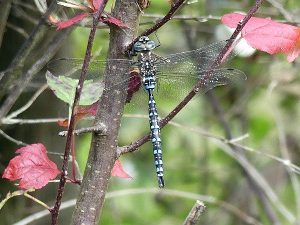 Paddle-tailed Darner Aeshna palmata (Odo.: Aeshnidae) Aziza Cooper
Paddle-tailed Darner Aeshna palmata (Odo.: Aeshnidae) Aziza Cooper
Here is a selection of photographs obtained by Ian Cooper by the Galloping Goose Trail in View Royal on the evening of Oct 14 2024.
First is a linyphiine spider. This is a large group, whose individual species are very difficult to determine from photographs without close examination of a specimen. However, Dr Robb Bennett writes, cautiously: I THINK the female linyphiine MAY be a Microlinyphia. M mandibulata is the most common.
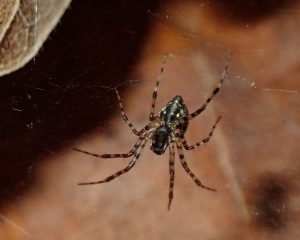 Linyphiine spider. Just possibly Microlinyphia (Ara.: Linyphiidae – Linyphiinae) Ian Cooper
Linyphiine spider. Just possibly Microlinyphia (Ara.: Linyphiidae – Linyphiinae) Ian Cooper
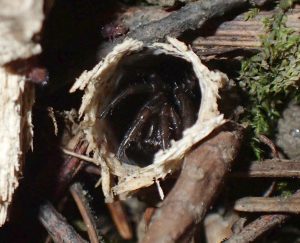 Folding-door spider – Antrodiaetus pacificus (Ara. – Myg.: Antrodiaetidae) Ian Cooper
Folding-door spider – Antrodiaetus pacificus (Ara. – Myg.: Antrodiaetidae) Ian Cooper
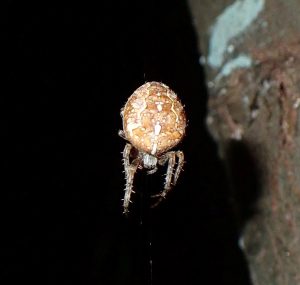 Araneus diadematus (Ara.: Araneidae) Ian Cooper
Araneus diadematus (Ara.: Araneidae) Ian Cooper
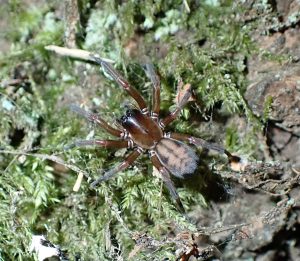
Callobius pictus (Ara.: Amaurobiidae) Ian Cooper
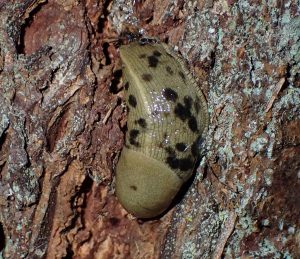 Ariolimax columbianus (Pul.: Arionidae) Ian Cooper
Ariolimax columbianus (Pul.: Arionidae) Ian Cooper
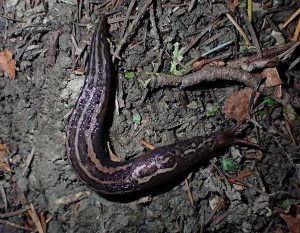 Limax maximus (Pul.: Limacidae) Ian Cooper
Limax maximus (Pul.: Limacidae) Ian Cooper
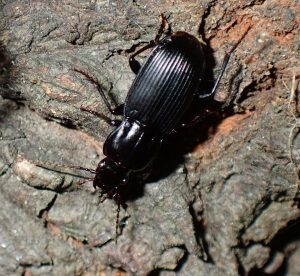 Pterostichus sp. (Col.: Carabidae) Ian Cooper
Pterostichus sp. (Col.: Carabidae) Ian Cooper
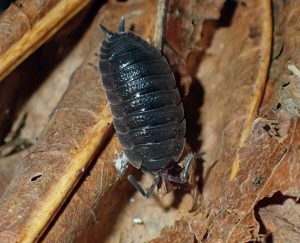 Common Rough Woodlouse – Porcellio scaber (Isopoda: Porcellionidae) Ian Cooper
Common Rough Woodlouse – Porcellio scaber (Isopoda: Porcellionidae) Ian Cooper
Ian photographed this caterpillar last night at Colquitz River Park:
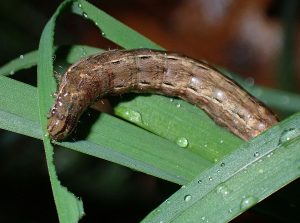 Noctua pronuba (Lep.: Noctuidae) Ian Cooper
Noctua pronuba (Lep.: Noctuidae) Ian Cooper

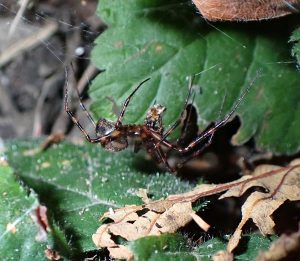 Forest Spider Pimoa altioculata (Ara: Pimoidae) Ian Cooper
Forest Spider Pimoa altioculata (Ara: Pimoidae) Ian Cooper Cybaeus signifer (Ara.: Cybaeidae) Ian Cooper
Cybaeus signifer (Ara.: Cybaeidae) Ian Cooper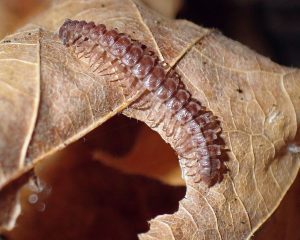 Flat-backed Millepede –Scytonotus sp. (Diplopoda: Polydesmidae) Ian Cooper
Flat-backed Millepede –Scytonotus sp. (Diplopoda: Polydesmidae) Ian Cooper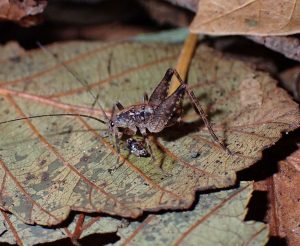 Camel cricket Pristoceuthophilus celatus (Orth.: Rhaphidophoridae) Ian Cooper
Camel cricket Pristoceuthophilus celatus (Orth.: Rhaphidophoridae) Ian Cooper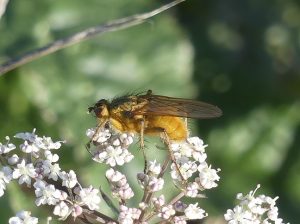
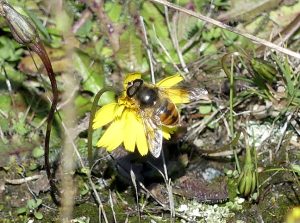 Common Drone Fly Eristalis tenax (Dip.: Syrphidae) Aziza Cooper
Common Drone Fly Eristalis tenax (Dip.: Syrphidae) Aziza Cooper